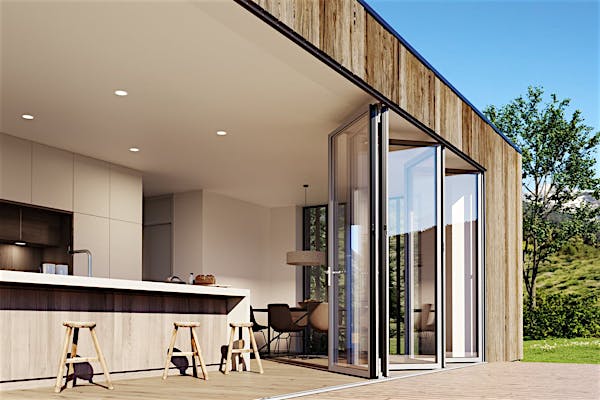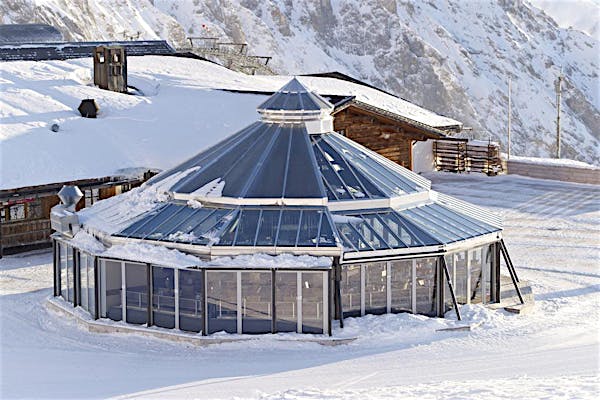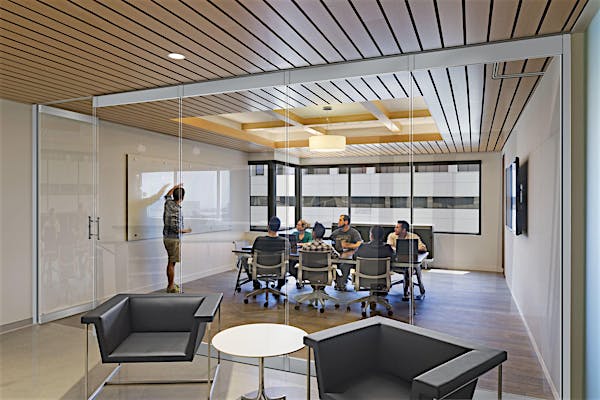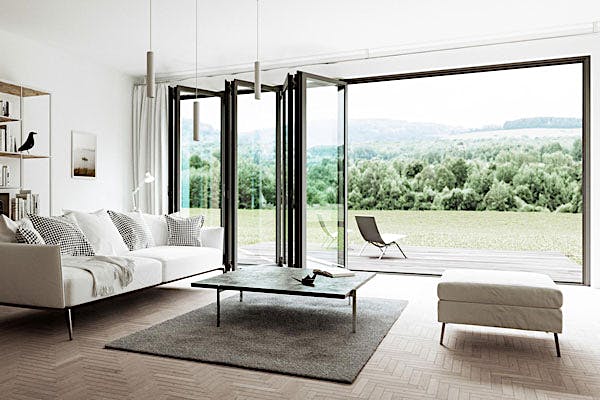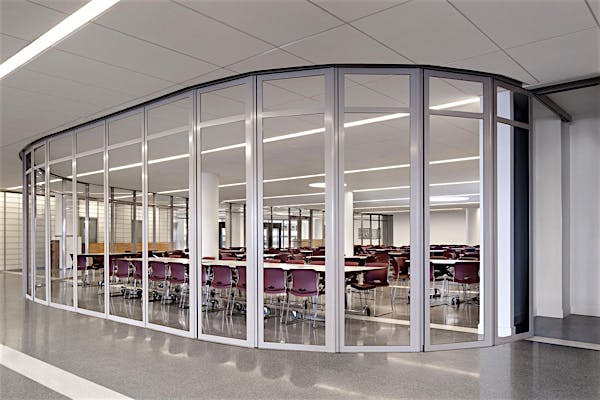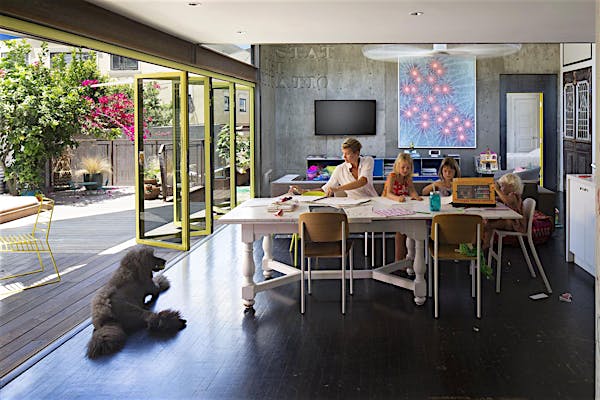
What does an ideal classroom look like? In today’s evolving educational landscape, traditional lecture-based classrooms are being replaced by dynamic learning environments that prioritize collaboration, interaction, and student-driven discovery. Active learning classroom design enables educators to connect with students in meaningful ways, promoting curiosity, critical thinking, and participation.
From elementary schools to universities, these future-ready spaces, often featuring dynamic solutions like bifold glass walls, enhance student engagement and improve learning outcomes. Let’s explore how.
Bifold Glass Walls and How to Design Classrooms for Active Learning

What is Active Learning Classroom Design?
Before we delve into some inspiring real-life applications, let’s explore what makes active learning classrooms, or ALCs, effective. Unlike traditional classrooms with fixed seating and lengthy lectures, ALCs adopt a more flexible learning approach with movable furniture and adaptable layouts that encourage hands-on activities and student engagement. Common characteristics to consider:
- Movable desks and modular seating
- Technology and digital tools
- Multiple zones for different types of learning
- Adaptable layouts for diverse activities
- Dynamic design elements like bifold glass walls
Together, these elements create flexible, engaging environments that support collaboration, spark creativity, and invite students to actively participate in each other’s learning journey.

The Benefits of Active Learning Classrooms
What exactly are the benefits of active learning classrooms? As the name implies, these learning spaces embrace an “active” learning approach through dynamic design elements and a variety of learning activities. Some key benefits to consider are:
- Increased Student Engagement: Moving away from traditional lectures, these classrooms encourage active participation and keep students more involved in the learning process.
- Personalized Learning: The adaptable setup allows educators to tailor their teaching to different learning styles and student needs.
- Flexible Layouts: As seen in the use case below with bifold glass walls, movable furniture, and interchangeable floor plans, adapt to better serve diverse activities as needed throughout the day.
- Collaboration and Teamwork: Diverse learning methods promote peer interaction, helping students build strong communication and collaboration skills.
Technology Incorporation: Multimedia and digital resources create a more dynamic and engaging learning experience while equipping students with career-ready skills.

How NanaWall Bifold Glass Walls Promote Dynamic Classrooms
Whether it be an interior or exterior application, movable glass systems help turn traditional classrooms into flexible, modern learning spaces. As interior partitions, these systems can easily open up or close off areas, allowing teachers to change the layout based on what the class needs, whether it’s group work, quiet study, or a bigger space for presentations.
In exterior applications, opening glass walls connect classrooms to common areas or outdoor spaces, helping create a more engaging and adaptable learning environment. Even when closed, the transparent panels facilitate a feeling of openness and brightness by letting in natural light, fresh air ventilation, and maintaining visibility between rooms.
Design Inspiration: 3 Active Learning Classroom Use Cases

Unique Classroom Design at Hermitage Visual Arts School
At the Hermitage Museum’s Visual Arts School in Norfolk, Virginia, a former 1910 horse stable was transformed into a light-filled, flexible art studio. To preserve the historic charm while creating a modern learning space, architects at Hanbury integrated a wood framed NanaWall folding glass wall. The large opening connects the studio directly to an outdoor courtyard, allowing for open-air art classes and hands-on activities. This dynamic setup supports active learning by encouraging creativity, collaboration, and a seamless flow between indoor and outdoor environments year-round.

Adaptable Learning Space for Career Development
SLV High School needed a flexible classroom for its CTE Program, offering students the opportunity to gain the academic, career, and technical skills needed for success. To achieve this, 19six Architects selected a NanaWall SL60 for its ease of use, sound control, and adaptability. The goal was to give teachers full control of the layouts, allowing the classrooms to transform into one spacious, shared space or two separate spaces. True to the philosophy of active learning classrooms, the furniture and layout adapt to the needs of every activity, whether it be aquaculture or robotics.

Bright, Bold, Sound Controlled, and Flexible Spaces at Oyster Bay High School
Oyster Bay High School set out to create vibrant, flexible spaces that could adapt to a wide range of student activities, from clubs and robotics to speaker events and project work. To meet these evolving needs, BBS Architects installed multiple acoustic bifold glass walls to allow both students and staff to easily reconfigure the space in seconds. Whether dividing the room for small group collaboration or opening it up for larger activities, the systems create interchangeable layouts with enhanced visibility and separation with a sound control rating of unit STC 36.

Final Thoughts
Why are active learning classrooms more important than ever? Flexible layouts, collaborative zones, and dynamic elements like bifold glass walls help create engaging spaces that adapt to varying teaching styles and student needs. Whether it’s connecting classrooms, expanding breakout areas, or enhancing natural light, opening glass wall systems like NanaWall offers the versatility and performance that today’s learning environments demand. By investing in future-ready classroom design, educators can encourage creativity, collaboration, and career-ready success for the next generation.
Looking for more ways to elevate classrooms with NanaWall opening glass walls? Check out more inspirational education projects here!
